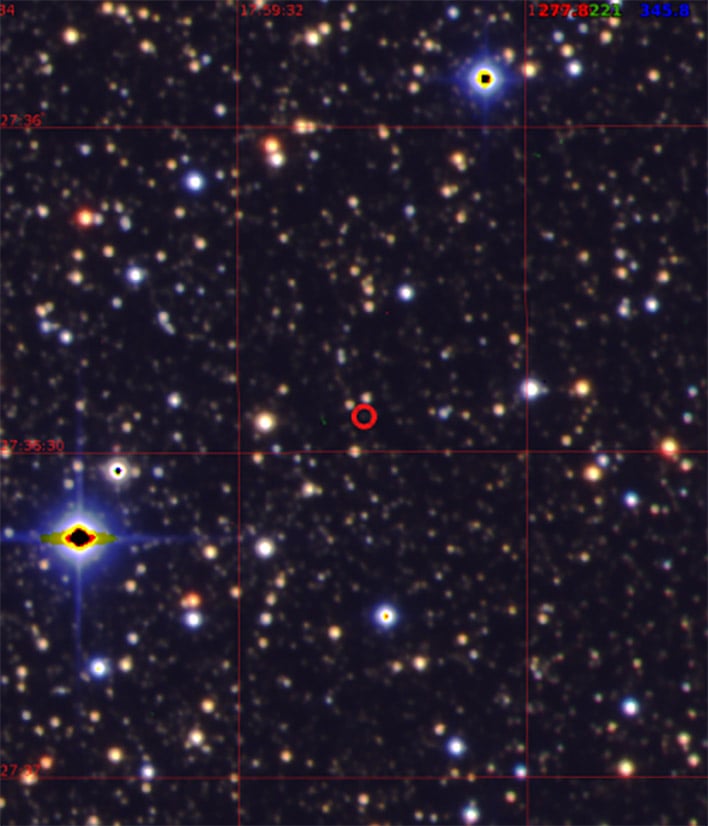Zombie Telescope Discovers Jupiter Has A Twin 17,000 Light Years From Earth
Researchers used “gravitational microlensing,” a phenomenon predicted by Einstein's theory of relativity, to discover the planet. According to the Institute for Research on Exoplanets at Université de Montréal, gravitational microlensing, “allows planets to be found using light from a distant star. The path of the light from this star will be altered by the presence of a massive lens-- in our case, a star and a planet.” The star therefore appears to be brighter under this context. Dr. Eamonn Kerins at the University of Manchester further noted that, “To see the effect at all requires almost perfect alignment between the foreground planetary system and a background star.”

A CFHT MegaCam sloan 𝑖 +𝑟 + 𝑔 colour composite image of the same region with a pixel scale of 0.00187. Image centered at the position of K2-2016-BLG-0005.
This planetary discovery (PDF) is even more remarkable as the Kepler telescope is not only decommissioned but was never intended to find planets through microlensing. However, there seems to be no end to the Kepler discoveries. Scientists are incredibly hopeful that the upcoming Euclid and Roman missions “will be optimized for this kind of work.” The Euclid spacecraft is currently set to launch in 2023, while the Nancy Grace Roman Space Telescope should launch no later than 2027.
Images courtesy of D. Specht et al, "Kepler K2 Campaign 9: II. First space-based discovery of an exoplanet using microlensing."


